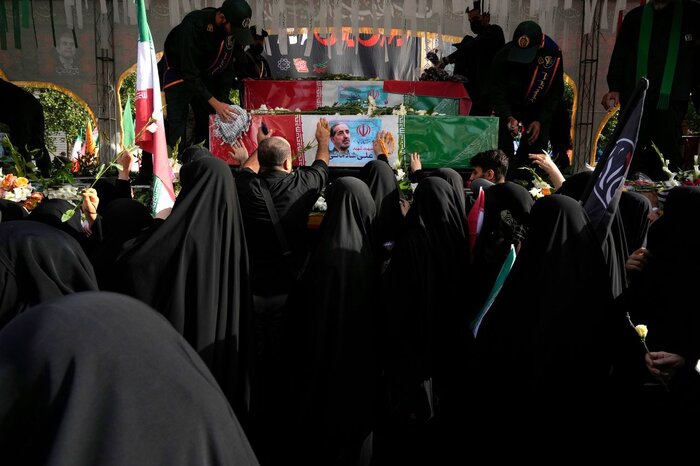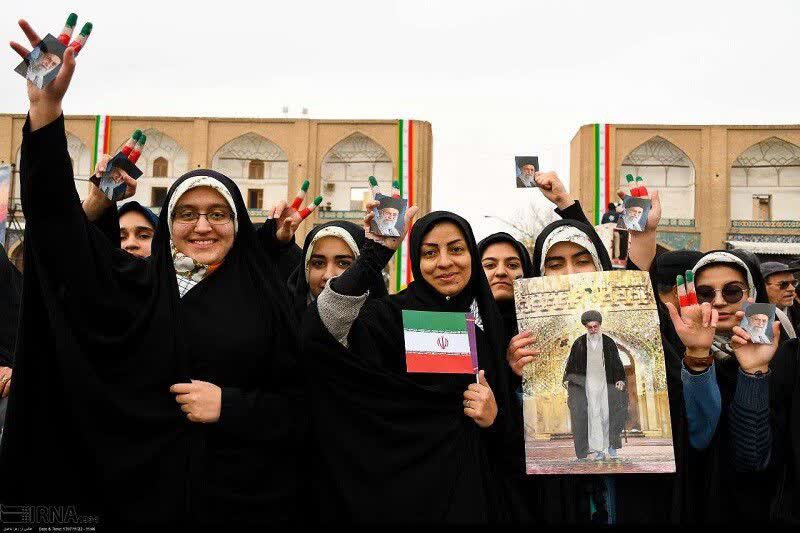In the twelve-day conflict that aimed to break Iran’s will, Iranian women upended the enemy’s calculations with patience and faith, demonstrating their capacity to serve as a strategic variable within the nation’s defense architecture.
✍|by Ms. Razieh Akbari, Women & Family Activist
The Battlefield of Wills and Worldviews
Before weapons and tactics clash, every war is a contest of wills and worldviews. The twelve-day imposed war, born of a misguided ambition to fracture Iran’s national fabric and deliver a crushing strategic blow, carried a fundamental error in calculation. The enemy reduced Iran to its hardware, overlooking the powerful software—the spirit underpinning resistance. In this brief but profound confrontation, that spirit found embodiment like never before in the form of the Iranian woman. This post explores that inner logic and spiritual alchemy, which elevated women from supportive roles in Iran’s Sacred Defense to decisive strategic actors in modern hybrid warfare doctrine.
Women: A Strategic Arm in Defense
The Islamic Revolution was fundamentally a human-centering movement, liberating identity—especially women’s—from the Eastern rigidities and Western decadence, acknowledging their true station as God’s vicegerents capable of shaping history. Supreme Leader Khamenei’s words, “A woman is the primary manager of the family and the most influential factor in raising individuals and guiding society,” are not ideological niceties—they are foundational principles of Islamic governance. The twelve-day war provided the crucible for this principle in its most critical form.
The enemy’s hybrid tactics had dual axes: undermining society’s intellect via cognitive warfare and cyberattacks on knowledge infrastructure, and breaking hearts by sowing fear and psychological collapse within families. Against this dual strategy, the Iranian woman engaged in a remarkable two-front struggle.
In the strategic backend—where battles over codes, frequencies, and algorithms raged—the presence of women scientists and engineers in cyber defense and defense industries was not merely academic. It was faith expressed through expertise. The elite engineer working round the clock to thwart cyberattacks on the nation’s power grid was not just an engineer—she was a mujahid whose fortress was the server room and whose weapon was intricate coding.
She embodied Imam Khomeini’s notion that commitment takes precedence over expertise, yet achieved the highest levels of specialized knowledge to fulfill that commitment. This fusion of revolutionary insight and modern science paralyzed the enemy’s calculations. While the aggressor focused only on Iran’s missile and drone reach, they overlooked the ingenuity of the woman engineer optimizing missile guidance software in emergencies.
Emotional Governance: Our Weapon Against Psychological Warfare
The enemy’s narrative war and psychological operations aimed to hollow society of hope and inject systemic despair. Here, motherhood became a strategic weapon. The calm of a mother sheltering her children amidst explosions, the sincere tone of a wife sharing her fighter-husband’s iron resolve on social media, the grassroots networks of neighborhood women supplying each other’s needs and caring for the elderly—all stood as the most powerful bulwark against societal collapse.
This form of emotional governance and human-centered management arises from Iranian-Islamic culture and eludes any Western think tank’s attempt to model it. Through the alchemy of patience and faith, the Iranian woman transformed anxiety into tranquility and fear into courage. With her instinctive and humane “jihad of explanation,” she nullified the enemy’s false narrative of a collapsing nation and revealed to the world the true image of a living, resilient people. This direct embodiment of leadership’s view of women as pillars of societal calm was manifest.
Beyond Missiles: Recognizing a Strategic Variable
The twelve-day war ended, yet revealed a fundamental truth: Iran’s deterrence power isn’t confined to missile range or drone capabilities. A new and decisive variable has entered the equation—rooted deeply in this land’s identity and culture: the woman ideal of the Islamic Revolution.

A woman capable of simultaneously leading a complex scientific-defense project and being the beating heart of a family and community. A commander in cognitive warfare on the frontlines and an unparalleled crisis manager at home.
This “third model,” neither Eastern nor Western but born of Qur’an, Ahl al-Bayt, and nurtured by the revolution, has evolved from cultural theory into strategic reality. Any future analysis of Iran’s national power that overlooks this collective spirit and vital artery embodied in Iranian women will mirror the enemy’s miscalculation during the twelve-day war. The architecture of victory in this battle rested less on concrete and steel, and more on the steadfast, insightful shoulders of women who proved that jihad knows no gender or borders—and faith is the strongest weapon in any confrontation. This is the greatest triumph of that war and the dawn of a new chapter in women’s role in building the Islamic Civilisation.
From: mehr


